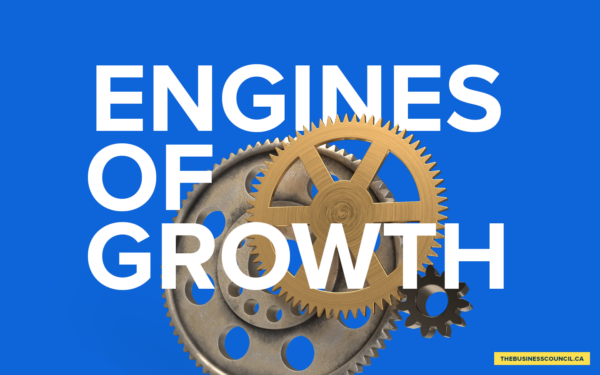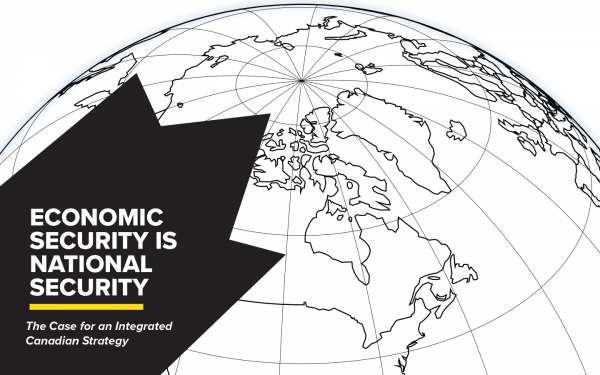Competing in the 21st Century Skills Race
Executive Summary
Competition from low-wage countries has long been a challenge for many Canadian manufacturers. But the global economy is evolving and growing numbers of previously undeveloped economies are now moving up the value chain. As China and other Asian countries invest heavily in education and skills development, it is time to assess how well our country is positioned to compete in the emerging global skills race.
This paper compares Canadian and Chinese achievements in three broad areas: general literacy and numeracy; the number of students enrolled in science, technology, engineering and mathematics (STEM) programs; and the development of skills that are considered particularly important for innovation, such as critical and creative thinking, collaboration and adaptability. It concludes by raising questions for discussion and some modest proposals to spur discussion toward a vision and plan for talent development that would help to secure Canada’s place in the global knowledge economy.
Canada has long boasted high standards of literacy and numeracy. A high proportion of Canadians complete high school (although there are concerns about levels of achievement in areas such as mathematics). Participation in college and university education is high as well, but the proportion of students in STEM programs is weak, especially at the postgraduate level. A recent survey shows that while Canadian students understand the importance of science and technology to Canada’s future, most are not inclined to pursue careers in those fields.
By contrast, China’s growth in basic literacy and high school completion in the past 20 years has been phenomenal. Fully 50 per cent of all Chinese postsecondary students are enrolled in STEM programs. While the overall proportion of students attending postsecondary education is lower in China than in Canada, the gap is narrowing and the absolute number of Chinese STEM graduates is much greater. China, a nation rich in human resources, is rapidly becoming a nation rich in highly skilled human resources. Moreover, Chinese students are studying abroad in ever-increasing numbers. An estimated one million Chinese have studied abroad during the past 20 years, in over 100 countries. Some 60,000 are now studying in Canada, a 35 per cent increase over the past four years.
These comparisons raise uncomfortable questions for Canadians, such as:
- What are the skills that will enable Canada to compete successfully in the 21st century and what institutional arrangements will ensure that Canadians are equipped with those skills?
- How can Canada develop educational policies and plans geared to national economic priorities when our Constitution gives the provinces and territories exclusive responsibility for education?
- What will it take to convince policymakers and the public that education is an investment in our economic future and not merely a social cost?
- How will we meet the need for more scientists, engineers, technologists and skilled tradespeople when our postsecondary system is largely driven by student choice, and when insufficient numbers of students seem inclined to pursue such careers?
- In what ways can private-public partnerships, the not-for-profit sector and collaborations among formal and information organizations – schools, colleges, universities, libraries, museums and other institutions – help to improve Canadian educational outcomes?
In conclusion, we call for the creation of a National Roundtable on Skills to develop both a vision for the future and a comprehensive strategy to achieve that vision. Success will require the participation not just of governments at all levels, but of the private and not-for-profit sectors. Canada’s continued growth and prosperity depends on our nation’s ability to develop the skills and talents of its people to their maximum potential.
Sommaire
La concurrence des pays à bas salaires pose depuis longtemps un défi à de
nombreux fabricants canadiens. Mais l’économie mondiale évolue et un nombre croissant d’économies auparavant non développées gravissent la chaîne des valeurs. Alors que la Chine et d’autres pays asiatiques investissent de fortes sommes en éducation et en développement des compétences, il est temps que nous procédions à une évaluation de notre capacité de concurrencer dans la nouvelle course aux compétences mondiale.
Le présent document compare les réalisations canadiennes et chinoises dans trois grands domaines : littératie et numératie générales; nombre d’étudiants inscrits à des programmes de science, technologie, ingénierie et mathématiques (STIM); développement de compétences considérées comme particulièrement importantes pour l’innovation, comme la pensée critique, l’imagination créatrice, la collaboration et l’adaptabilité. Le document conclut en soulevant des questions à discuter et des propositions modestes visant à stimuler la discussion vers une vision et un plan de développement des talents qui aideraient le Canada à se tailler une place dans l’économie du savoir mondiale.
Le Canada peut se vanter depuis longtemps de taux élevés de littératie et de
numératie. Un pourcentage élevé de Canadiens terminent leurs études secondaires (bien qu’on s’inquiète des niveaux atteints dans certains domaines comme les mathématiques). La participation aux études collégiales et universitaires est également élevée, mais la proportion des étudiants qui s’inscrivent à des programmes de STIM est faible, notamment au niveau d’études supérieures. Une étude récente montre que bien que les étudiants canadiens comprennent l’importance de la science et de la technologie pour l’avenir du Canada, la plupart d’entre eux ne sont pas enclins à entreprendre des carrières dans ces domaines.
Par ailleurs, la croissance qu’a connue la Chine sur le plan de l’alphabétisme de base et de l’obtention d’un diplôme en fin d’études secondaires a été phénoménale au cours des 20 dernières années. Pas moins de 50 pour cent de tous les étudiants postsecondaires chinois sont inscrits à des programmes de STIM. Si la proportion d’étudiants poursuivant des études postsecondaire est inférieure en Chine à celle du Canada, l’écart se rétrécit et le nombre de finissants chinois aux programmes STIM est très supérieur en nombres absolus. La Chine, pays riche en ressources humaines, devient rapidement un pays riche en ressources humaines hautement qualifiées. De plus, les étudiants chinois étudient à l’étranger en nombres toujours croissants. On estime qu’un million de Chinois ont étudié à l’étranger au cours des 20 dernières années, dans plus de 100 pays. Quelque 60 000 sont présentement aux études au Canada, soit une augmentation de 35 pour cent au cours des quatre dernières années.
Ces comparaisons soulèvent d’épineuses questions pour les Canadiens, par exemple :
- Quelles sont les compétences qui permettront au Canada de concurrencer avec succès au 21e siècle et quels arrangements institutionnels assureront que les Canadiens sont dotés de ces compétences?
- Comment le Canada peut-il élaborer des politiques et des plans en matière d’éducation axés sur les priorités économiques nationales au moment où notre Constitution donne aux provinces et territoires la responsabilité exclusive de l’éducation?
- Que faut-il faire pour convaincre les décideurs et le public que l’éducation est un investissement dans notre avenir économique et non simplement un coût social?
- Comment parviendrons-nous à satisfaire au besoin de scientifiques, d’ingénieurs, de technologues et des gens de métier qualifiés quand notre système postsecondaire est à la merci des choix des étudiants et quand trop peu d’étudiants semblent enclins à poursuivre ce genre de carrières?
- Comment les partenariats privés-publics, le secteur sans but lucratif et les ententes de collaboration entre organisations formelles et informelles – écoles, collèges, universités, bibliothèques, musées et autres institutions – peuvent-ils contribuer à l’amélioration des résultats de l’éducation au Canada?
En conclusion, nous demandons la mise sur pied d’une Table ronde nationale sur les compétences en vue de développer une vision pour l’avenir et une stratégie complète pour réaliser cette vision. Le succès exigera la participation, non seulement des gouvernements de tous les niveaux, mais aussi des secteurs privés et sans but lucratif. Le maintien de la croissance et de la prospérité du Canada dépend de notre capacité de développer les compétences et les talents au maximum du potentiel de nos citoyens.
Intorduction
Over several decades, Canada has witnessed the decline of many of its traditional manufacturing industries in the face of competition from low-wage, low-skilled Asian economies. Much of our clothing now comes from countries such as India, Pakistan, Sri Lanka and Bangladesh, our televisions and stereos from South Korea, our cars from Japan, and seemingly everything else from China. Canadians, meanwhile, have moved on to other industries and to more value-added activities. While still benefiting from a rich supply of natural resources, we have developed expertise and have achieved success in a range of high-skilled fields including financial services, telecommunications, biotechnology and aerospace.
But the global economy is evolving in ways that continue to challenge Canadian workers and companies. The so-called “Asian Tigers” – a term originally applied to Singapore, Taiwan, Korea and Hong Kong – have established themselves as world leaders in high technology manufacturing. But now India, China and other previously low-skilled economies are moving up the value chain and churning out increasing numbers of highly educated, highly qualified workers. Given the overwhelming size of their populations, even a modest increase in their postsecondary participation rates can have a significant impact on Canada and other developed nations.
It is time for a frank assessment of Canada’s ability to compete in this skills race. This article seeks to contribute to this process by contrasting aspects of education and skill development in Canada with those of China (as an example of an Asian economy undergoing rapid transformation) and by examining the options for Canadian governments, educators, companies, non-government organisations (NGOs) and individuals.
Just two generations ago, in the immediate aftermath of the Second World War, a much lower level of education was required for Canadians to participate fully in the economy of the day. In 1948, an estimated 54 per cent of all Ontario students were dropping out of school by age 16, R.D. Gidney notes in his book “From Hope to Harris: The Reshaping of Ontario’s Schools”. Of the entire 15-19 age group, fewer than 40 per cent were still in the classroom. Such levels of education were suited to a still largely rural economy with a growing urban manufacturing sector.
By contrast, employment prospects today for those who fail to graduate from secondary school are poor. A recent federal government labour market study predicted that, over the next decade, nearly three-quarters of all new jobs will be in categories usually requiring postsecondary education. 1 This rate of change is striking and Canadians must ask themselves whether their public and private sector institutions are up to the task of producing the highly skilled labour force our economy requires. The issue is not just how much education and training is required for individuals and the economy as a whole, but what kinds of education, which specific skill sets, and for whom these will be of most value in the global knowledge economy.
Literacy and numeracy – the abilities to read, write and use numbers in ways that enable active participation in society – have long been recognized as essential building blocks for all higher-level skills. However, these needs have not remained constant over time. Rather, they have increased in complexity as life and work have grown more sophisticated; it is now important that everyone reach a basic level of literacy and numeracy.
Beyond this basic level, there is growing agreement that knowledge and proficiency in the areas of science, technology, engineering and mathematics (socalled STEM skills) are closely related to a country’s capacity to compete in those sectors of the economy in which technological innovation is most important.
Finally, there are skill sets and cultural attitudes that are not based on specific subject areas but which are closely related to the capacity for innovation. These have variously been described as generic skills, advanced skills, enabling skills and 21st century skills but all. All imply a blending of specialized knowledge with abilities to reason in appropriate ways, to be critical, creative, and innovative, to collaborate, to be adaptive, flexible and capable of risk-taking. These skills are difficult to teach, at least in a direct sense, and even harder to assess. We therefore have little evidence of their achievement until after the period of formal education. These three groups of skills – literacy and numeracy skills, STEM skills, and innovation-related skills – are not mutually exclusive. Rather, they build on and reinforce one another. Individuals, organizations and nations that succeed in the 21st century are likely to be those in which the full range of skills have been developed in an integrated way. With this in mind, it may be useful to review some data for both Canada and China and consider where traditional advantages lie and where rates of progress are more significant.
Canada
Canadians have traditionally enjoyed high rates of literacy and numeracy. In the most recent (2009) report of the OECD Programme for International Student Assessment (PISA) Canadian 15-year-olds outperformed their peers in the majority of the 65 participating countries and urban economies in each of reading, mathematics, and science. Only four – Shanghai-China, South Korea, Finland and Hong Kong-China – outperformed Canada in reading. Those same countries, as well as Singapore, Chinese Taipei and Liechtenstein, outperformed Canada in mathematics. Those results, together with other indicators of education and basic skills, led the Conference Board of Canada to award our country an A grade in its national report card in 2010, ranking Canada second only to Finland in a comparison of 17 peer countries.
In the Conference Board rankings, Canada and six other countries scored an A in terms of high-school completion rates; Canada also earned an A on college completion, together with just Belgium and Japan. But when it comes to university completion rates, Canada drops to a B, behind the Netherlands, Norway and the United States. We do even worse in terms of participation in STEM education at the postsecondary level, dropping to a C grade based on Canada’s relatively low proportion of graduates in these fields. (Ontario’s College Mathematics Project has highlighted the alarmingly high failure rates in mathematics – a foundational subject for most technology and business programs – among first-year college students.)
It is at the postgraduate degree level, however, that Canada’s performance is weakest. Ranked by the overall number of PhD graduates per 100,000 people, Canada is in the lowest quartile, scoring a D grade (Table 1). This led the Conference Board to conclude that our country needs more graduates with advanced qualifications and more graduates in STEM fields to enhance innovation and productivity growth “and ultimately to ensure a high and sustainable quality of life for all Canadians”.

In response to concerns about Canada’s relatively low rates of participation in STEM fields, particularly at the postsecondary level, Amgen, a leading Canadian biotechnology company, and Let’s Talk Science, a non-profit organization dedicated to the promotion of science education, recently undertook the first benchmark study on science learning in Canada. Using OECD data, the study explored student participation in university-level STEM programs from 2004 through 2007. In Canada during this period 10 to 13 per cent of all newly granted university degrees were in science disciplines (life sciences, physical sciences, mathematics, statistics and computing) and 8 to 9 per cent were in engineering-related fields (engineering and engineering trades, manufacturing and processing, architecture and building). The proportion of science degrees in China was similar but the proportion of engineering degrees was 30 per cent in 2004, increasing to 37 per cent by 2007.
At the doctoral level, Canada ranked 25th among 36 nations in science and engineering doctorates in 2006; here again, science disciplines (22 per cent of all doctoral degrees) predominated over engineering (17 per cent). By contrast, 37 per cent of all doctorates in China were in engineering disciplines, compared with fewer than 20 per cent in science (Table 2).

The study also examined labour market trends and concluded that Canada faces a growing shortage of workers with undergraduate and advanced degrees in STEM programs. According to Human Resources and Skills Development Canada, the sectors with the highest number of future job openings include mining, information and communications technology, transportation equipment, oil and gas, science services, and health care – all fields where STEM education is important. These findings are consistent with those of a 2010 study by Dr. Rick Miner, President Emeritus of Seneca College, who projected that, in Ontario alone, half a million skilled vacancies in 2011 “will grow almost exponentially to well over a million by 2021 and approach two million by 2031.” While some of these shortages may be made up through immigration, most will have to be “homegrown” and this raises questions about our capacity to develop such specialised skills.”
Yet in spite of that that, a 2010 Angus Reid survey of Canadians aged 16 to 18 revealed that only 37 per cent were interested in taking even one science course at the postsecondary level. Our research indicates that Canadian students recognize the need for more people to study science, but that a majority of them are not themselves attracted to such programs or careers. As the Amgen/ Let’s Talk Science study concluded, there appears to be a serious disconnect between Canadians’ positive perceptions about the importance of science to society and young people’s desire to pursue a science-related career.
China
Since its founding in 1949, the People’s Republic of China has strongly emphasized education and skills development. In 1986 it became mandatory for Chinese students to receive six years of primary education and three years of secondary education. Age 15 marks the final year of compulsory education, after which students can enroll in a senior secondary school. The proportion of all students continuing in this way has risen sharply in recent decades and, in 2008, 65 per cent of all students graduated from senior secondary school.
Responsibility for China’s education system is shared between the Ministry of Education and the governments of China’s 30 provinces, municipalities and autonomous regions. While policy is developed centrally and applies nationwide, implementation is local and may be more or less developed depending on the jurisdiction. Thus, while the above-noted PISA results for Shanghai students can be assumed to be representative of all students in that urban area, they may not representative of China as a whole.
As is the case in most Southeast Asian societies, Chinese culture puts great value on schooling, and Chinese parents have high ambitions when it comes to their children’s education and careers. In a system in which there is intense competition at each stage for entry into what are perceived to be the best schools, formal assessments – usually in the form of written examinations – are of great importance. Students in the last year of middle school, and again in the last year of senior secondary school, often work late into the night and parents frequently pay for extra tuition to ensure that their children achieve marks that are high enough to gain entry to a preferred school.
Over the years, China has implemented a series of major reforms to increase the capacity of its postsecondary education system and to stimulate educational excellence, both qualitatively and quantitatively. The growth in numbers of students participating in higher education over the past decade has been remarkable. According to the Ministry of Education, 2,206,072 students were enrolled in a university or college in the year 2000. By 2009, this had grown by nearly 290 per cent to 6,394,932 (Table 3).

Even more remarkable is that over the same nine-year period, the proportion of students enrolled in STEM subjects remained consistently over 50 per cent, with the proportion studying engineering increasing by more than 280 per cent. While the overall proportion of Chinese students attending a postsecondary institution is still less than that in Canada, the overall numbers are of course much greater and the proportions are also catching up.
It has been said that China is transforming itself from a nation rich in human resources into a nation rich in highly qualified human resources. During the period 2006 to 2010, the central government formulated and implemented the National Medium-and Long-Term Plan for Scientific and Technological Development, allocating RMB 619.7 billion (about $CDN 100 billion) for science and technology – representing an average annual funding increase of 22.7 per cent. In addition, China plans to increase spending on research and development to 2.2 per cent of GDP by 2015. At the governmental level, this translates into a strong commitment to STEM education as an essential driver of economic development.
Chinese students are also gaining international experience in ever-increasing numbers. Over the past 20 years, more than one million Chinese are reported to have studied abroad, in more than 100 countries. Of these, more than 300,000 have returned to China on completion of their studies. In a recent speech in China, Prime Minister Stephen Harper noted that 60,000 Chinese are currently studying in Canadian post-secondary institutions, a 35 per cent increase in the past four years.
To these quantitative achievements must be added important qualitative characteristics such as work ethic and the degree of parental involvement in and commitment to their children’s education. These characteristics are found not only in China but in other Asian countries, such as Japan, Korea and Singapore. In 1998, after it was reported that Singapore had outperformed all other participating countries in the Third International Mathematics and Science Study (TIMSS), the Singapore government announced a 40 per cent increase in education spending over the following decade. At the same time, the Ontario government was in the process of cutting education funding, despite that province’s relatively poor showing in TIMSS.
Another qualitative Asian characteristic is an openness to, and enthusiasm for, learning from others. By way of illustration, the authors can relate a personal experience. In 1999-2000, one of us (Hu) arrived as a visiting scholar at York University where another (Orpwood) was undertaking a large-scale R&D project that included the development of what became the science and technology curriculum for Grades 1-8 in Ontario. While at York, Hu translated the entire Ontario curriculum policy document and, on returning to China, arranged for its publication by a prominent scientific publisher – the first time such a foreign curriculum had been published in China. This took place at a time when China’s Ministry of Education was reforming its own curriculum for elementary science, and the new science curriculum for elementary schools in China drew on some of the ideas from the Canadian research program. These qualitative factors reflect important aspects of Asian culture, reinforcing the drive toward excellence in education both for individuals and society.
The Challenges We Face
There is much to be proud of in the Canadian education system. Literacy and numeracy levels are relatively high by international standards. Enrolment in postsecondary institutions is also high and growing. And political momentum to support education has been growing in all provinces. But there are obvious challenges, particularly with regard to the number of postgraduate students and the relatively low rate of participation in STEM programs – areas in which high levels of knowledge and proficiency have been shown to have direct economic impact. Dealing with these challenges requires that we ask a number of potentially awkward questions:
- How can Canada develop educational policies and plans geared to national economic priorities when our Constitution gives the provinces and territories exclusive responsibility for education?
- What will it take to convince policymakers and the public that education is an investment in our economic future and not merely a social cost?
- How will we meet the need for more scientists, engineers, technologists and skilled tradespeople when our postsecondary system is largely driven by student choice, and when insufficient numbers of students seem inclined to pursue such careers?
- In what ways can private-public partnerships, the not-for-profit sector and collaborations among formal and information organizations – schools, colleges, universities, libraries, museums and other institutions – help to improve Canadian educational outcomes?
Without wanting to open up a constitutional debate about responsibility for education and skills development, we feel strongly that Canada lacks a forum in which the full range of stakeholders can address these issues. In our view, Canada urgently needs a National Roundtable on Skills to articulate a vision for the future and develop the path forward. Such a roundtable would require the participation of provincial and territorial governments, but also the federal government, the private sector, not-for-profit organizations, educators from both formal and informal settings, and citizens themselves.
If education is to be recognized as an investment in our future, a common vision and strategy must be created collaboratively. And if such a vision is to become reality, it should be backed with funding to support programs and activities aimed at the development of appropriate skills for all Canadians. The proposed roundtable must have the resources to assess the effectiveness of existing educational institutions and policies, and to make recommendations where changes are required.
In addition, we believe that governments and other stakeholders must work harder to recruit and retain young people in STEM programs and to support effective practises in these areas. One option would be to rethink traditional subject boundaries and develop multi-disciplinary approaches to learning that would provide students with relevant and exciting contexts for their education. Another approach would be to establish better linkages between education and career awareness. Formal and informal educational institutions, as well as corporate and voluntary organizations, all have roles to play here.
As we consider how best to strengthen Canada’s educational system, it is essential that we pay close attention to what other countries are doing to address their own needs for highly skilled labour. For that reason, we also support building a robust and long-term Canada-China academic exchange and collaboration system, with a particular emphasis on educational research. Such a system would enable timely understanding and exploration of innovative trends in education. It would also improve Canadians’ understanding of China as a world-class developer of skilled talent.
Conclusion
Even if these challenges are solved – if literacy and numeracy are universally achieved, if STEM participation is increased substantially, and if the numbers of doctoral students is doubled – will this be enough to ensure Canada’s continued prosperity in an increasingly competitive world? In the 19th century and for most of the 20th century, Canada achieved high levels of literacy and numeracy, which in turn fed impressive rates of economic growth. More recently, STEM skills have become the means by which countries such as Japan, Korea, Singapore, Taiwan, and Finland have established leadership positions in key industries, leaving Canada struggling to maintain its place among the advanced industrialized economies.
As the 21st century progresses, we must consider whether a new skills race is developing, one that is still poorly defined and in which teaching, learning and assessment remain largely under-researched. The skills of the 21st century include the ability to reason in innovative and creative ways, to collaborate and communicate using new and emerging technologies, to adapt rapidly, to solve problems and take calculated risks, and to continue learning throughout one’s lifetime.
If we believe that these are the skills most needed for individuals and nations to succeed in the 21st century, we must ask ourselves whether our present educational institutions are the best vehicles for nurturing these skills, or whether new arrangements and methods are required. Can institutions built on a centuries-old model of teaching and learning be expected to produce graduates who are innovative, critical, adaptable and flexible, or do we need to develop new structures and strategies? If existing institutions are to continue as the principal means of skills development, what reforms are required to ensure that graduates are ready for the world they will enter?
References










